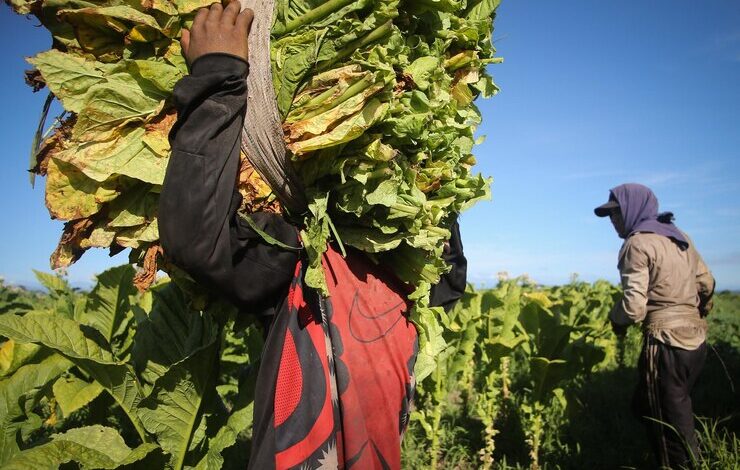
The Tobacco Industry and Marketing Board (TIMB) has issued a strong reminder to tobacco farmers about the importance of properly conditioning tobacco before grading and baling. This step is crucial to ensuring the tobacco maintains its quality and can fetch a competitive price on the market.
In a post on X, TIMB emphasized that proper conditioning plays a key role in enhancing the flexibility and softness of the tobacco leaves, which are vital for handling. This process reduces the likelihood of the leaves breaking, which is a common issue when tobacco is too dry. Tobacco that breaks easily during handling or baling tends to end up fetching very low prices at sales floors, which significantly impacts farmers’ profits.
Tobacco conditioning refers to the process of adjusting the moisture content of tobacco leaves after they’ve been cured. This ensures that the leaves become more flexible and less brittle, making them easier to handle without breaking. The conditioning process involves rehydrating dried leaves, which helps prevent them from becoming too fragile and prone to damage. The result is a high-quality leaf that is better suited for the market.
According to TIMB, the “feel” or condition of the tobacco is a critical factor when it comes to selling, as it affects the leaf’s appearance and handling. With proper conditioning, tobacco can embrace all styles and qualities, ensuring it remains competitive in the market.
TIMB provided a detailed guide for farmers on how to condition tobacco effectively to prevent post-harvest losses. The first step is to ensure that the barn is cooled down immediately after curing. The regulatory board advised against attempts to condition a hot barn, as this could lead to uneven moisture distribution.
Farmers should transfer the tobacco to conditioning boxes before grading. These boxes should have the butts of the tobacco resting against a wire-mesh bottom. The conditioning box is then placed on a steaming rack, allowing steam to pass through the mesh bottom and hydrate the tobacco leaves. It is essential to avoid laying leaves directly on the steam tray, as this can result in uneven conditioning. Some leaves may be over-conditioned while others remain dry, which can affect the quality of the final product.
Once the tobacco is graded, TIMB recommended that farmers maintain a humid atmosphere within the grading area, especially during dry weather. This ensures the tobacco retains its desired moisture content. After grading, the tobacco should be placed on racks in rods or sticks tied together until it is ready for baling.
TIMB also warned against conditioning tobacco by introducing steam directly into bales using a hose-pipe. This method can lead to inconsistent conditions and moisture condensation, which can damage the tobacco leaves. Instead, farmers are urged to use appropriate wrapping paper when baling the tobacco. This paper should have a smooth, waxed interior that locks in moisture, helping preserve the flexibility and quality of the tobacco throughout the storage and post-sale process.
The choice of wrapping paper is a crucial part of maintaining the tobacco’s quality. TIMB cautioned farmers against using unsuitable khaki paper, which may not be able to preserve the tobacco’s moisture effectively. The wrong paper can cause moisture loss, making the tobacco brittle and lowering its market value. Farmers should ensure that the wrapping paper completely covers the bale to prevent moisture from escaping.
In addition to the advice on tobacco conditioning, TIMB also reminded small-scale tobacco growers who have outstanding balances under the Tobacco Inputs Credit Scheme (TICS) to come forward and make payments before May 31, 2025. Those who settle their balances will benefit from a 50% discount.
Farmers aged over 65 years who are TICS beneficiaries are requested to bring certified identification documents to TIMB offices. In cases where TICS beneficiaries have passed away, their relatives are encouraged to provide the necessary documents, including a certified death certificate or a letter from both the village head and the councillor, in order to settle outstanding balances.
By following the best practices for conditioning, wrapping, and handling tobacco, farmers can significantly improve the quality of their crop and increase the likelihood of securing better prices at the sales floor. TIMB’s guidance aims to ensure that farmers can maximize their yields and avoid the financial losses associated with poor post-harvest handling. With the proper care and attention to detail, tobacco farmers can ensure their crop meets the highest industry standards and remains competitive in the market.




